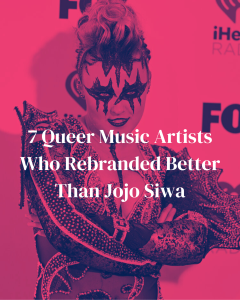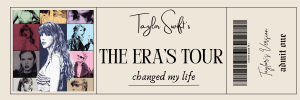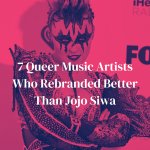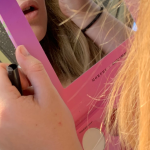Grit & Gravel is a Glass column that delivers you the daily discussions you hear circling around your social cliques. Alike friendly discussion, it offers holistic opinions to better understand this strange life that we live.
This edition is about celebrities publicly discussing their plastic surgeries and other forms of beauty modifications, specifically Ariana Grande and Selena Gomez, and why we should applaud those who publicly discuss the lengths they go to achieve the everchanging beauty standard.

Teen magazines are filled with celebrity content, and flipping through their pages would often land you on a spread featuring your favourites adorned in the latest fashions, partnered with a popular beauty line, or paired with a page worth of gossip and intel.
Another common thing you might find would be the discussion of celebrities’ changing faces, mainly of young female stars who had been in the entertainment industry since they began puberty. They would point to the change in her lip size, her once plump cheeks gone, her eye shape slightly different.
This leads to Ariana Grande, who I was obsessed with and adored since I was nine years old (although, nowadays, that is a tricky thing to be – a fan). To myself, I denied these plastic surgery allegations, but I was making these assumptions as a young girl also going through puberty. I was hoping they weren’t true. Social media seemed to be vocal about their dislike for people (women mostly) who decided to get cosmetic surgery. I hoped that by the time I reached Ariana’s age, I too would have these beautiful changes that would fit the mould of every beauty standard possible.
But in September last year, for the first time ever, Ariana Grande publicly discussed her own experience with Botox and lip fillers.
Her entire career has had needles poked through the fabric with constant questions about possible beauty modifications the singer has had. She’s even made jokes over the years to do with the conspiracy. But those needles had a point.
On Vogue’s popular Beauty Secrets series, with a video that has amassed 6.4 million views, Grande became fully transparent with an unscripted discussion about her use of plastic surgery from the beginning to her career: “I’ve had a ton of lip filler over the years and Botox. I stopped in 2018 because I just felt so… too much.”
If this confession had come out at the same time when gossip columns in magazines like Dolly, Cosmopolitan, Girlfriend, or Seventeen were all the rage, this ‘confession’ would have created an onslaught of hate comments about how the decision to undergo Botox would be a ‘shallow’ and ‘selfish’ move. But there seems to be a shift in the way we view this discussion now.
The responses under the Beauty Secrets video have been mostly positive, even thanking Grande for talking about her experience. Comments included how appreciative they are for hearing it, claiming they have “never heard any celeb talk about getting lip filler and Botox so freely and transparently,” or how “it’s refreshing for her to be this honest and vulnerable for us.”
She’s not the only one who has begun to unravel the beauty myth. Selena Gomez is another celebrity who has shared (in a humorous, who-gives-a-crap way) her use of Botox. In a now-deleted Instagram post, Gomez responded to a comment stating the need to remove her ‘cheek filler’ by laughing it off: “Hahahaha I’ve had Botox bb girl.” And the response from this, too, has been nothing but supportive and appreciative.
For some it might have been common knowledge, but for others hearing of Grande and Gomez being Botox users might have come as a shock. Vogue Beauty Editor Hannah Coates is familiar around plastic surgery, having tried Botox, lip filler, and Profhilo. She worries however of people not seeing through the cosmetic procedures, instead interpreting their beauty as obtainable through multiple skincare recommendations. Coates says: “They see their favourite celebrities looking smooth and luminous at 30 and older, but often don’t realize the rigorous regimen of facials, injectables, and other skin-enhancing treatments it takes to look that way. The result? They compare their own skin to visions of perfection that require time and money – and lots of it – to achieve.”
What makes this interesting with both Grande (30) and Gomez (31) is that both women are now CEOs of their own makeup brands. r.e.m. beauty and Rare Beauty are companies that have been receptive to self-acceptance, creativity, and embracing what is yours and yours alone. So, when the two use, or have previously used, Botox to create their looks and have built up their brand off the back of their own looks, it can feel what Melanie Macleod says as “disingenuous not to be open that they’ve had a helping hand.”
We know that other celebrities have used plastic surgery to either transform into a desired look or to reduce the signs of ageing. Bella Hadid, Kim Kardashian, Paris Hilton, Jimmy Carr. But the problem at its core is that many consumers of fillers and treatments are attempting – consciously or not – to convince non-celebrities and those in lower financial brackets that their look is genetic and natural. There is an effect of these people having economic freedom to alter their appearance: a stigma of never reaching true beauty and in turn staying ‘ugly.’
When a celebrity promotes a certain facial or procedure, they rise in popularity with plastic surgeons. Dr Yannis Alexandrides is the founder of 111SKIN and has witnessed spikes in interest when it comes to celebrities and treatments – or, what they’re now known as, tweakments. He says that “celebrities are leaders when it comes to setting trends,” so when someone like Gomez is candid about her Botox usage or Kim Kardashian with vampire facials, “we definitely see an uprise in patient enquiries.”
Time for some statistics. The Aesthetic Plastic Surgery National Databank found that Botox procedures performed in America between 2019 and 2020 increased by 54%, and fillers by 75%. Over in the UK, plastic surgeons in 2020 reported an increase in consultations by 70%. Online. As of March 2022, 2.2 million people search for Botox every month on Google, a 57% increase from 2018. Our faces have become commodities, thanks to our front-facing cameras and the existence of Zoom calls.
We could claim that there has been a rise in interest for cosmetic surgery as discussions with plastic surgeons from around the world can be found on TikTok. They talk about a certain celebrity and whether they’ve had a nose job, a face lift, fox eye lift, a butt lift, the list goes on. With these surgeons discussing these procedures and their processes, it is becoming more open and accessible for younger audiences, who might start to conspire their first consult with the needle.
Beauty and wealth have always been “bedfellows,” as described by Dazed Beauty’s Ellen Atlanta. In her article, she discusses the ‘not ugly, just poor’ rhetoric that, while intended to be a joke, has some truth behind it. Today’s tanned complexion is a massive beauty standard in the West which “indicates leisure time, holidaying abroad and the luxury of disposable income,” whereas the East mainly favours pale skin that signifies a “comfortable, cosmopolitan life” lived indoors.
This is seen by fans and those unable to access such procedures as natural ageing, or lack thereof. From Atlanta herself: “Cosmetic procedures have become a type of status symbol for aspirational women, the new designer bag.” And when a new designer bag is popular, sometimes a dupe or knock-off version for a cheaper price is the cheat’s way to fit in. The same can be said for plastic surgery: those who cannot afford to consult with plastic surgeons cut corners to Columbia to invest in cheaper augmentations and Botox. Because of this gap between wealthy and non-wealthy, people are willing to go above and beyond the health scares and their bank accounts to achieve the myth of eternal youth.
Using Botox also eases the fear of ageing. Hollywood demands stars to age backwards, but people are calling for celebrities to embrace the natural growth of their appearance. They want their idols to reconstruct the beauty myth. But for occupants of Silicon Valley, for example, where ‘Brotox boom’ is ever-present, cosmetic surgery can increase job security. Tech workers are at threat of losing job opportunities if they appear to be older. An anonymous plastic surgeon told Washington Post that by 35 “you’re seen as over the hill.” Even when it comes to job interview call backs, Italian researchers found that attractive women have a call back rate of 54% and attractive men with 47%. In comparison, unattractive women had the worst results, at a 7% call back rate.
While writing this article, I’ve attempted to refrain from using words like ‘admitted’, ‘confessed’, and ‘revealed’. There is something there that just doesn’t sit right; those words have the wrong connotation. Laura Capon is in the same boat, pointing out in her Substack that these adjectives were used in multiple headlines for both Grande and Gomez and have “an element of shame to them,” when that is not where the discussion was directed in the first place.
We are on the road to removing this shame, to reduce what psychotherapist Lauren Baird calls ‘comparison pressure,’ and ultimately to remove the stigma around cosmetic surgery. Women in the spotlight have been criticised for plastic surgery, when the real problem is what Baird calls the “patriarchal culture financially benefiting from breeding these insecurities.” But it seems that the narrative is slowly dying. Articles exploring these discussions will hopefully cease to exist as “women’s appearances will no longer be a topic”.
As I continued to watch her Beauty Secrets video, I listened to Grande admit that “beauty was about hiding for me, and now I feel like maybe it’s not. […] I want to see my well-earned cry lines and smile lines and I hope my smile lines get deeper and deeper and I laugh more and more. I just think ageing…it can be such a beautiful thing.” And indeed, it is a beautiful thing: getting older is something we earn from life. ‘Positive ageing’ is the new trend of 2024, and something that will hopefully be ‘in’ forevermore.
Grande finished this subconscious flow by adding: “These are thoughts that I feel like we should be able to discuss if we’re sitting her talking about beauty secrets. Fuck it, let’s lay it all out there.”
And let us do exactly that.
Matilda Lees is a writer and filmmaker living on Yugambeh country (Gold Coast) studying film and creative writing at Queensland University of Technology. Tending to think too much about society and the way we live, her practice is influenced by just that and often explores the human experience, alignment and intimacy, and nostalgia in all its twisted being. If you require her attention, simply mention Greta Gerwig, Sally Rooney, Mona Awad, or Sylvia Plath in your conversations.







